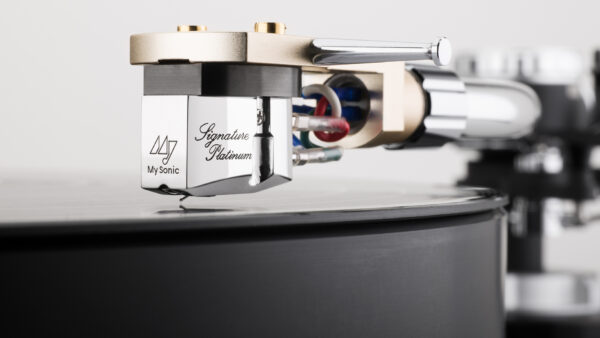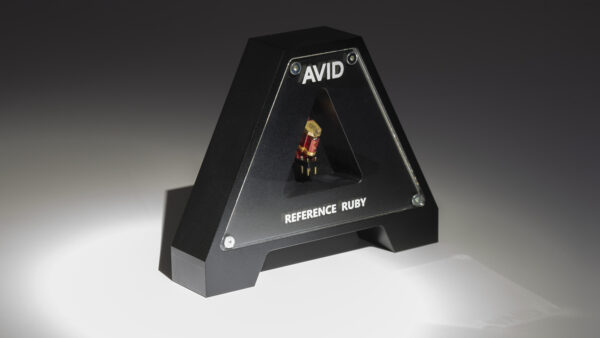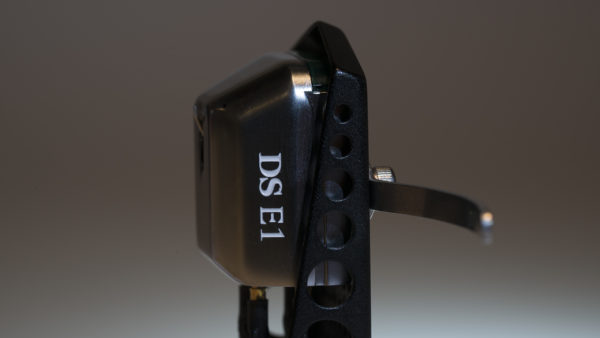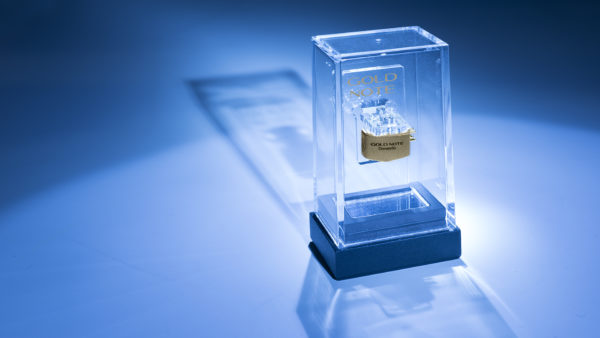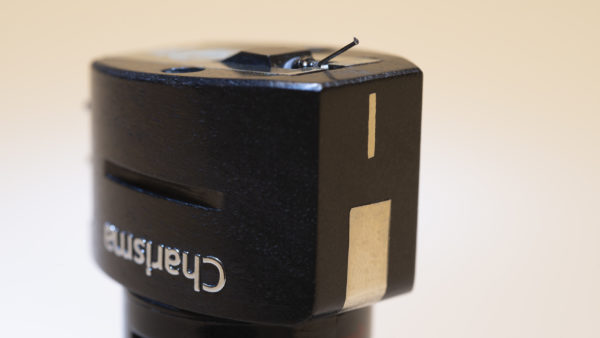DS Audio, makers of the world’s leading optical cartridge systems, is an offshoot of Digital Stream Corporation, a company started by Tetsuji Aoyagi more than 30 years ago. More appropriately, they should be called Optical Stream Corporation, as they are the world’s leading provider of industrial laser optics systems and disc testing optics – accounting for nearly the entire world’s market share. They co-developed the LED Optical Mouse with Microsoft, and their fingerprints can be also be found in the development of the version 1 of the USB connection standard, the optical joystick for gaming applications, and a myriad of medical and industrial optical test equipment. They are the world’s foremost experts on laser and LED optical technologies.
Clearing the controversy
DS Audio’s optical phono cartridges, are often misunderstood as having lasers or digital signals. DS Audio’s optical cartridge systems are in fact, purely analog devices. The cartridge generates an analog signal and the phono preamplifier which DS Audio calls a Phono Equalizer, is also is an analog signal amplifier, boosting the cartridges’ signal the same way as any other phono stage on the market. The difference in the DS version is it features gain levels and equalization designed to match with the DS Audio cartridges, and it also supplies power to the cartridges’ LED. There are no digital signals, nor does it involve any digital conversion in the entire process.
The main difference between a DS Audio “Optical Cartridge” versus traditional MM or MC cartridges is how they generate electrical signals. MM and MC cartridges are mechanical devices that move a coil windings in between magnets (or vice versa) to generate an electrical signal from the information in the record grooves. Optical cartridges utilize a diamond stylus and a cantilever, but attached to the end of the cantilever are not coil or magnets, but that’s where the similarity ends. The optical cartridge uses a screen and a photodetector that interprets shadow changes generated by an LED light inside the cartridge body. The cantilever is attached to a screen with a thickness of only 100 microns, which makes the moving mass much lower than even the smallest of moving coil cartridges, resulting in better dynamics and retrieval of more fine detail than what you are probably used to.
The DS-W2 retails at $13,000, ranking second in DS Audio’s line up, just behind the DS Master 1 at $22,500. Nearly one half the price of the Master 1, the DS-W2 cartridge shares the same internals components as the Master 1, with a Micro-ridge stylus mounted on a sapphire cantilever. The difference is in the cartridge body material. The W2 uses a traditional aluminum body, where the Master 1 uses a more expensive material, Ultra Duralumin. The DS-W2 Equalizer comes housed in a solid aluminum chassis elegant to the touch and feel, it’s clear acrylic top reveals a serious array of capacitors lurking inside.
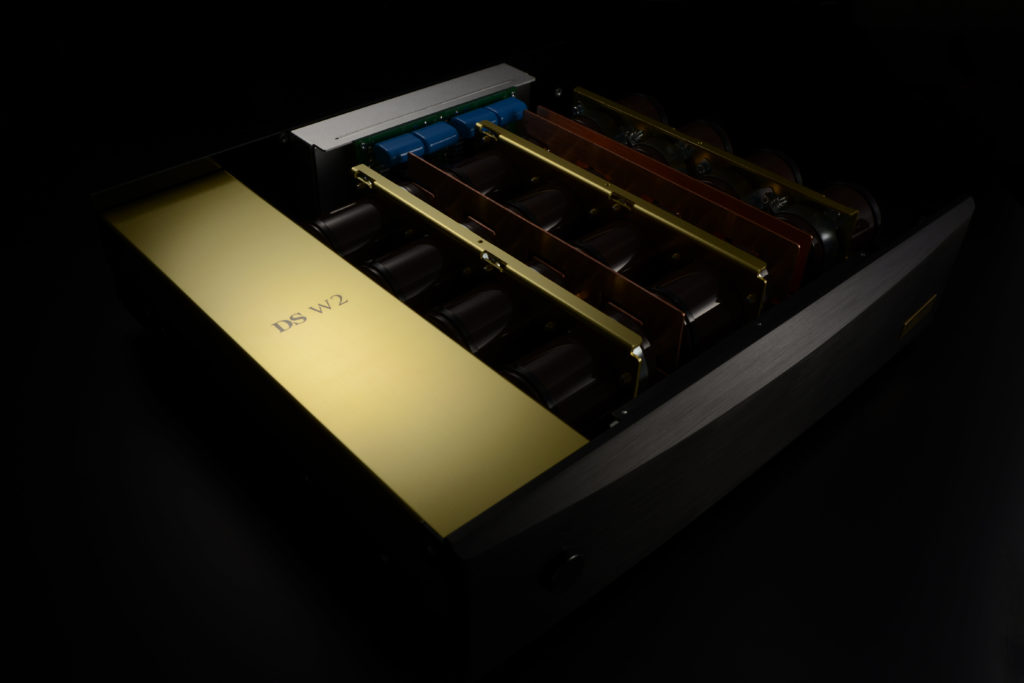
Acclimation and initial listening
Getting used to the cartridge for a few months, moving the DS-W2 between a 12” Reed 3P Unipivot tonearm, a Graham Phantom II Supreme B52, and 3 separate turntables (JC Verdier, TW Raven, & Micro Seiki RS5000), I’m immediately struck by the smoothness of the sound in the mid to upper frequency ranges. This cartridge is particularly suitable for voices, violins, cellos and violas. It is not as voluptuous as Koetsu or Kondo cartridges, but it shares some of the sweet and seductive characteristics of both. The delineation around objects floating in the acoustic space created by my system appears rounded off and smoothed out; taking away any grain, sibilance or glare, but also reducing texture and contrast. The entire presentation feels pushed forward, with less depth and layering to the soundstage that what I’m accustomed to.
Mounting the DS-W2 cartridge on the 12”, Glanz MH-124S Premium and the Acoustical-System Axiom Anniversary tonearm, both give the DS-W2 a new life – a more balanced feel than using Uni-pivot arms. The much needed texture and dynamics roar back. The DS-W2’s strength is well demonstrated by Solveig Slettahjell’s Live at Victoria album. Listening to Is My Living in Vain Slettahjell’s voice hangs in mid-air, on a backdrop of a live audience clapping and powerful bass drums. Compared to traditional moving coil cartridges, the DS-W2 offers a presentation that puts you closer to the front row seats, as if Slettahjell is sitting just a few feet away from you pushing the impact of the drums, as well as the 3-D surround sound of the hand clapping, almost as if you’re in the band. Slettahjell’s rendition of Leonard Cohen’s “Come Healing,” the DS-W2 puts you much closer to the vocalist her piano, with the instruments feeling bigger, closer, and more immediate. Again, the feeling is immersive as opposed to merely observational.
Vangelis’ soundtrack from 1492: Conquest of Paradise always makes me want to stand up and sing with the chorus of this heroic performance, and sing I did. Again, the difference in spatial ability that the DS-W2 delivers and that of traditional cartridges is enveloping. The DS-W2 is not quite as deep as a traditional MC, but the soundstage is wider. The difference is not suble, and if your system is up to the task, you will experience a dramatically different position of instruments in the acoustic space compared to what you are used to.
The DS-W2s immediacy lends itself particularly well to jazz. Blicher Hemmer Gadd’s Special 33 album, produced in collaboration with Brinkmann Audio is a perfect example. I love the track “Babylon,” which opens with a cough, and “I’m Not Really Much of a Dancer.” The DS-W2 transforms my listening room into a Jazz lounge, with snappy, realistic drums, and a sax that feels right in front of my face. Hiromi & Edmar Castaneda’s album Live in Montreal, presents a duo is a perfect match of musicians fiery and funky improvisational skill. Castaneda shows us how a harp can be made to sound like a guitar in “For Jaco”, and “Fire” is a dazzling display of Hiromi’s speed and power on the piano. Both tracks are also a true test for the DS-W2’s transient response. The agility of the cantilever, combined with the low moving mass of the DS-W2’s internal components offers unrestricted mobility which translates into lightening quick responses. This is what gives this recording the extra realism to Hiromi & Edmar Castaneda’s presentation, convincing me it is indeed real when I close my eyes.
Going big
Moving on to larger scale music, the DS-W2 continues to impress. The Hu’s debut album The Gereg combines Mongolian guttural vocals with traditional instruments instruments such as the Morin Khurr (horsehead fiddle), Tumur Khuur (Jew’s Harp), Tovshuur (Mongolian guitar), and drums. The DS-W2 rise to the challenge by delivering the required amount of power on “Wolf Totem”, with earth shattering dynamics and chest pounding bass drums beats, straight into your chest. (for those of you not familiar, I like to listen loud, and to the rest of you, you know how loud that is!) Yet in the middle of these thunderous tracks, minute texture and details from the strings of the Morin Khurr were not drowned out, you can still hear and feel the vibrations of the notes across the room.
Violin and piano concertos tend to be my go to classical test and the DS-W2s ability to zoom in on a particular instrument, making it appear focused, and close in physical proximity is spellbinding. Camille Saint-Saëns’ “Rhapsodie D’Avergne” (Turnabout TV 37108S), with Louis de Froment directing the Orchestra of Radio Luxembourg illustrates this perfectly. The piano is crisp with every keystroke, full of colors and contrast. Positively engulfed in the piano, as if from a few feet away, it feels as if I’m sitting front row center in a concert hall.
The DS-W2 fills void in my analog arsenal and nothing else sounds similar to it. The smooth and non-grainy character allows me to listen to music for hours without fatigue, and the immediacy that it delivers allows me to enjoy my small but growing collection of Jazz music with a realism which my system didn’t have before. It is an innovative and unique product that deserves my recommendation.
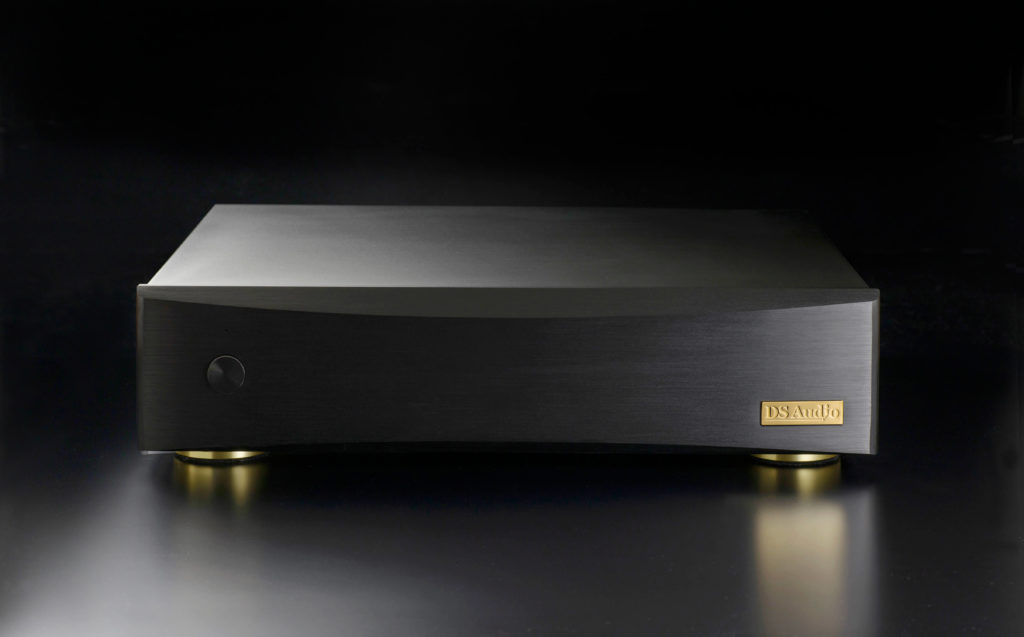
The DS Audio DS-W2 system
MSRP: $13,000
www.ds-audio-w.biz
Our thanks to Richard Mak and DS Audio for the images.

